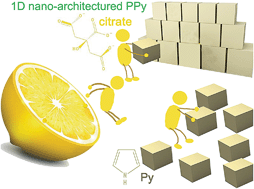Tuning nano-architectures and improving bioactivity of conducting polypyrrole coating on bone implants by incorporating bone-borne small molecules†
Abstract
Citric acid, a molecule present in fresh bone, was introduced into template-free electrochemical polymerization to form biocompatible coating made of polypyrrole (PPy) nano-cones on bone implants. It served not only as a dopant to tune the nano-architectures but also as a promoter to enhance bioactivity of the PPy-coated implants.


 Please wait while we load your content...
Please wait while we load your content...